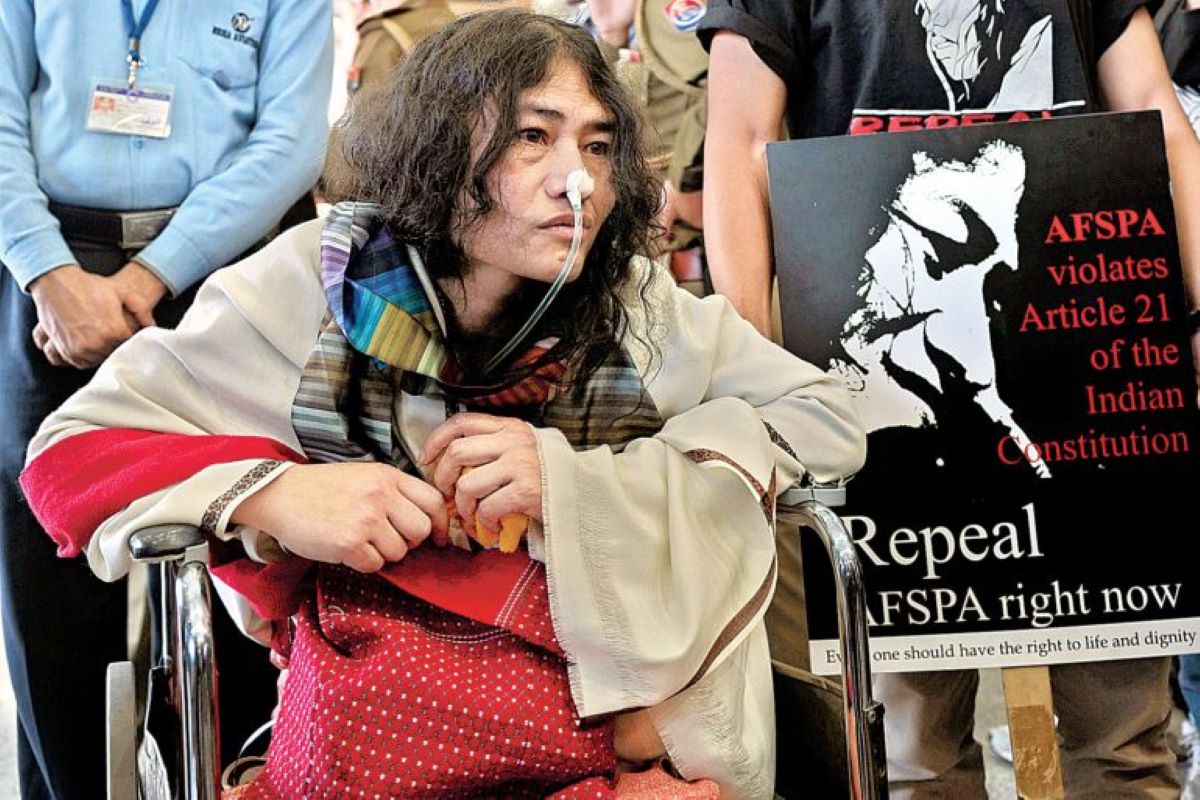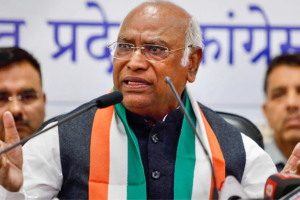There are questions that remain unanswered often on strategic grounds. The abandon with which six miners were first killed, followed by the death of nine civilians, and one soldier in Mon district of Nagaland, might be traced to the impunity enshrined in the armed Forces (Special Powers) Act, or AFSPA, but the circumstances that led to this terrible outcome, the misguided intelligence on which such an action was taken might never come to light. But the talking point is how this law entails a serious democratic deficit.
Since our rulers think that it is the colonial mindset that is responsible for stalling our developments, they may be gently reminded that it was the Viceroy Lord Linlithgow who declared emergency all over British India and promulgated the Armed Forces (Special Powers) Ordinance, 1942 on 15 August 1942, conferring vaguely defined special powers to the armed forces to arrest and use force (even kill) civilians on mere suspicion.
Advertisement
It was intended to be a tool to rein in the Indians participating in the Quit India movement then. But scholars regret that eight decades down the line the Indian establishment was unable to come up with a specially trained counter-insurgency force to deal with internal security mindful of the cultural plurality of the Northeast with imagination and not to treat it as yet another example of primitivist ethnic insurgency in a postmodern age; or, as a region inhabited by people who are racially and culturally far removed from the ‘mainstream’ Indian construct.
The admission of the former prime minister Atal Bihari Vajpayee in 2003 that Nagaland has a ‘unique’ history was, by all means, generous, recalling which Sanjib Baruah in his book In the name of the nation: India and its northeast notes how it amounted to “a subtle acknowledgment of the fact ~ important to Naga nationalists ~ that Naga protest against incorporation into India began before India’s independence” and a “belated recognition by the Indian government that it is historically inaccurate to call the Naga movement a ‘separatist insurgency’.” That is quite an interesting counterpoint.
The AFSPA (1958) that happens to be one of the most draconian instruments of security and control, first applied to Assam and Manipur and later amended in 1972 to extend to Tripura, Meghalaya, Arunachal Pradesh, Mizoram and Nagaland, vests unaccountable and extraordinary powers with the armed forces.
The public consciousness against the AFPSA was raised when a group of elderly and middle-aged women from different organisations of the Meira Paibi ~ the largest civilian movement fighting state atrocities and human rights violations in Manipur, besides drug abuse and crimes against women ~ led a protest march against the rape of Thangjam Manorama by soldiers of Assam Rifles. The fast unto death begun by Irom Chanu Sharmila on 2 November 2000, in protest against the Act, that continued well into August 2016, stirred public conscience.
The recent killings, reckless and misguided by all accounts, have once again brought the AFSPA as the bête noire, as no fewer than two Chief Ministers ~ Conrad Sangma of Meghalaya and Neiphiu Rio of Nagaland, both heading government with the BJP as ally ~ have pitched for the repeal of the law, under which an area can be declared a ‘disturbed area’, offering considerable immunity to the armed forces for use of force in the notified area the ambit of which now spans Assam, Nagaland, Manipur (with the exception of the Imphal municipal area), three districts of Arunachal Pradesh (Tirap, Changlang and Longding), and the areas falling under Namsai and Mahadevpur police stations, bordering Assam.
One understands that security inputs on the ground account for the notifications to get extended mostly for six months at a time. But the trouble is, the revocation may take years, even decades, if one goes by the instance of Meghalaya that was under AFSPA for 27 years, or Tripura where it was in force for over eighteen years.
As under this Act, once an area is declared disturbed, security forces are literally given unrestricted power to carry out their operations ~ to shoot, arrest and search, in the name of ‘aiding civil power’ and ‘maintaining public order’, the chances of excesses remain unconscionably high.
One can gauge the sensitivity of the issue and simmering discontent by recalling how the revocation of AFSPA became a central theme in the election campaign in Manipur in the Parliament elections of 2004, for all political parties. The Okram Ibobi Government drew a lot of flak “for human rights violations by the armed forces” from the Revolutionary People’s Front, a militant group that called for a boycott of the ruling Congress candidate for the Lok Sabha elections. A day before Prime Minister Manmohan Singh visited Manipur in November 2004, an announcement for setting up of a Committee under Justice B P Jeevan Reddy to review AFSPA was made.
The report submitted by the Reddy Committee for the consideration of the Home Ministry in June 2006 was not made public. Of all the recommendations it made, repeal of the AFSPA was what took the cake, albeit replacing AFSPA with new legislation, or inserting ‘appropriate’ provisions in the UAPA 2004 was on the table.
Notably the AFSPA and the impunity it entails has once again been held responsible for incidents like the Mon killings by a forum of seven Naga insurgent groups called the Naga National Political Groups (NNPG), which had supported the peace talks. And now the ill-fated ambush that was laid on a civilian vehicle carrying coal miners in Oting village, home to the Konyak Naga community who were mistaken for insurgents of the NSCN (Khaplang-Yung Aung) faction, does inadvertently point to the existence of many insurgent factions almost all of which are in ‘ceasefire agreement’ with the Government of India and engaged in peace talks.
But the history of insurgency in Nagaland is fraught if one recalls how the Naga National Council (NNC) demanded ‘independence from the Indian Union’ right since 1947, conducted a “plebiscite” in 1951 buttressing their cause, the subsequent insurrection led by Naga leader Angami Zapu Phizo, counterinsurgency and final statehood of Nagaland in 1963.
Seen through the jugular of the peace initiative launched under Jaya Prakash Narayan, B P Chaliha, and Michael Scott, a Scottish missionary leading to a cease-fire, decades of sporadic violence that led finally to the Shillong Accord in 1975 (between five representatives of a breakaway Naga group called the Revolutionary Government of Nagaland and Nagaland governor L P Singh), the arduous process might appear as a pyrrhic victory. Except it was not.
A group calling itself the National Socialist Council of Nagaland (NSCN) broke away in protest in 1980 that splintered further violently into two groups in 1988 with one faction being led by S S Khaplang, a Myanmar Naga, and the other by Thuingaleng Muivah and Isak Chishi Swu. The splintering of the Khaplang faction is important in the context of the firing, as it is led by Yung Aung, the nephew of NSCN-K founder, the late S S Khaplang.
The leadership came only through a “bloodless coup” in 2018 upon impeachment of Khango Konyak, an Indian Naga, who, upon Khaplang’s death in 2017, took charge of the NSCN-K. As Yung Aung’s support base is in Myanmar and the faction led by him that continues its “armed struggle” has been held liable for the killing of 18 personnel of Dogra Regiment of the army in Manipur in 2015, besides the killing of eight soldiers in Mon district (sharing border with Myanmar) in the same year, the misdirected hyperventilation of the Indian armed forces that led to the recent killing of civilians in the Mon district (considered a transit route for insurgents hiding in Myanmar) is contextualized.
The journey from India’s armed invasion in 1954 resulting in the impoundment of tens of thousands of Nagas into makeshift concentration camps, where many perished besides the bloody deaths of countless Nagas, combatants and civilians alike, to the NSCN-IM signing a “Framework Agreement” with Narendra Modi government in August 2015 and inking of an “Agreed Position” in 2017 with NNPG has been bloody and tortuous.
To exercise caution of the highest order is necessary not only because it is perceived to be a state with some 328 ethnic groups and with a history of long-running insurgencies contesting the Indian nation-state and local governments where, since the 1970s, the Union government has faced formidable opposition while trying to negotiate peace, but more essentially,
because, this vertiginous hillscape has been bitterly contested by some of the greatest military powers and the most formidable political regimes of the past century, the brave people deserve a fair and equitable deal.
(The writer is a Kolkata based commentator on politics, development and
cultural issues)
















